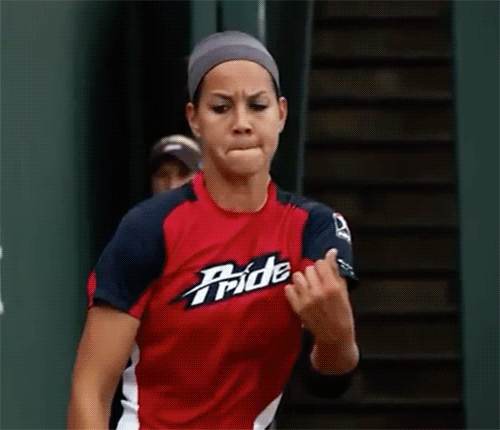Screwball elbow torque: is it dangerous?
I got a question a while ago from a reader who was curious about Jennie Finch’s screwball, specifically wanting to know if it was safer on the elbow than the more widely taught screwball (which is also the one we teach). I want to dispel some myths about screwballs and drops, and shed some light for any pitchers who may rely on these pitches and experience some elbow soreness.
Jennie Finch’s screwball
Here is a video of Jennie Finch explaining her screwball. It’s kind of the same physical principle as a peel drop, but at a sideways angle. We have never taught this screwball or a peel drop, so although I understand the physics of these pitches I can’t offer more insight than that. If I imagine teaching this screwball I can envision a lot of control issues for young pitchers. However, I did have a student who is now a D1 pitcher who didn’t come to me until her junior year of high school, and she already threw this kind of screwball. It seemed to work well for her.
The reader who asked the question surmised that because the arm movement is in toward you like a curveball, it puts less stress on the elbow. While it’s true that this method would totally eliminate the possibility of strain from an over extended elbow, it’s not true that the traditional screwball comes packed with this danger.
The usual screwball
The usual screwball that you typically see on TV involves stepping away from the power line and delivering the ball along a sort of swooping path, resulting in a pitch that cuts diagonally from the front corner of the plate to the back corner on the opposite side. For a right handed pitcher and batter, it will cut in on the hands. The wrist flick is similar to that of a frisbee toss, although the finger action is unique.
You can watch our videos on the screwball release here and here.
These videos mostly focus on the hand action, because it is critically important and can also be difficult to master (this is true for any movement pitch). They also touch on the arm path. But what about the total arm action?
As with all pitches (with the exception of the change up to a degree), relaxed whip is critical and the pitch is dominated by the forearm. Any upper arm movement (above the elbow to the shoulder) that occurs should be minimal and a result of natural momentum carrying the arm into the follow through.
So as the wrist flicks outward and the forearm naturally follows, the upper arm should stay fairly close to the body. If the arm is truly relaxed, the elbow might actually move a bit inward (opposite reaction) at the most aggressive moment of outward wrist flick.
Take a look at these snapshots of Cat Osterman finishing a screwball that I came across on youtube:

Notice how her upper arm stays pretty close to her body and her elbow is unlocked and inside her hand—meaning it’s not stretched out tight, and if I drew a straight line up from both her elbow and her hand, her hand would be noticeably farther away from her head. If you stick to these guidelines, this is a very safe pitch.
Where screwballs go wrong
In a perfect world, all pitches are totally safe! However, we all know that pitching-induced injuries happen all the time. Those that are caused by wear and tear rather than freak accidents are usually as a result of repeating bad mechanics.
In the screwball’s case, if you’re experiencing elbow pain, you’re probably using your whole arm as opposed to relaxed forearm/wrist whip with finger action.
Looking at the example above, imagine Cat finishing by stretching her arm as straight and tight as possible, creating a large gap between her arm and the side of her body. Does that sound like you? If so, you could be at higher risk for elbow injury.
To fix this, take a step back and work on your snaps again. Limit the involvement of your upper arm, focusing on keeping your elbow close to your torso (relaxing the whole time; don’t force it in there). Use your fingers to make your spin tighter and faster; your instinct to use your whole arm kicks in when the pitch on its own isn’t powerful enough/moving enough. Ramp up that spin!!
Watch out for drops too
As I mentioned, we teach a turnover drop rather than a peel drop, and the same principle applies: the pitch requires quick, relaxed wrist and forearm movements. If you stretch your whole arm away from your body, torque your elbow straight, or throw your shoulder/back into it, you’re putting yourself at risk. Your mantra should be wrist and fingers!